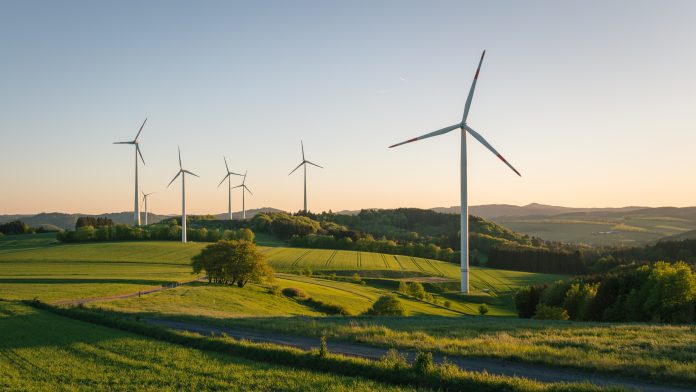Energy Performance Certificates (EPCs) are “misleading” indicators of zero carbon buildings and should no longer be used as official guides to help lower emissions, argues Jason Page, a sustainability specialist at property and construction consultancy Ingleton Wood
New analysis by Ingleton Wood shows actual carbon emissions for electrically heated buildings are around 60% lower than predicted by Energy Performance Certificates (EPCs), mainly because EPC methodology uses carbon factors set by the 2013 Building Regulations rather than up-to-date figures.
According to Ofgem, over 2.1m homes use electric heating. The change in the carbon factor has been dramatic as renewable technologies continue to make up more of the grid electricity mix while coal generation continues to fall.
An EPC report would today estimate a carbon footprint of 519kg per 1,000 kWh/yr of heating for a typical electric heating system in a home, the Ingleton Wood research found.
But that headline figure is based on the 2013 carbon factor set at 0.519 kgCO2/kWh. This has since fallen to around 0.212, meaning the carbon footprint is far more likely to be around 212kg per year – rather than 519kg – and more in line with a standard gas heating system (203kg).
EPCs becoming increasingly misleading
Our research strongly suggests EPCs show figures distorted from reality.
EPCs are a powerful tool in fighting climate change but they are now not only becoming worse at indicating building carbon emissions as the grid’s electricity moves towards renewable generation – they are becoming increasingly and actively misleading.
In our real-life example of an electric heated home, an EPC would have mistakenly shown gas as having around half the carbon footprint of electricity.
When we talk about carbon emissions, we have to remember this will naturally change over time due to variations on how the electricity is produced. This changes all the time, even minute to minute.
However, the carbon factor for grid electricity is only trending one way, with coal being phased out and renewable contributions increasing. The UK’s electrical grid will eventually trend to zero carbon – the National Grid is currently targeting 2035.
Discouraging the decarbonisation of heat away from fossil fuel systems
This entire situation seriously risks confusing homeowners and landlords, leading policymakers to making incorrect conclusions and discouraging the decarbonisation of heat away from fossil fuel systems because they appear to reach higher EPC ratings far more easily than electric heating.
EPCs were introduced in 2007 to record a home’s energy efficiency rating from A to G, with E the lowest legal standard for tenants. EPC assessors recommend changes to lower the carbon footprint and energy bills.
EPCs are also used to identify households in fuel poverty, with around 16m homes in England (two-thirds) currently rated D or worse.
The EPC energy efficiency rating is not a straight metric that shows energy efficiency. It is actually a combination of energy efficiency in kWh/m2/yr and fuel costs.
This makes it convoluted as a metric as it gives rise to the potential of highly efficient buildings with expensive fuel types, such as electricity, having a lower rating than a worse building with a cheaper fuel such as gas.
The Ingleton Wood analysis also found “significant discrepancies” between EPC ratings and zero carbon properties.
In Essex, for example, 178 homes have 100+ EPC ratings but 1,777 have a zero or better rating for carbon emissions per floor area. Of these, 72% were EPC rated A or B but eight, three and two were rated E, F and G respectively.
How can F and G homes be zero carbon? They were mostly period properties from the 1900s with wood log or pellet sourced heating and an assumed renewable source of energy. But it means zero carbon properties can have a low EPC rating if you have the right combination of high cost and low carbon fuels in a high energy demanding property.
While the next Building Regulations update, which is due imminently, may mean new EPCs are produced with carbon factors closer to reality, the decarbonisation of the electricity grid means EPC metrics will remain static and very soon be out of sync once more.
As Britain steps up action on climate change, the government is placing greater reliance on EPCs to help homeowners and landlords to cut their energy use and carbon footprint.
However, only 3% of industry respondents rated EPC reliability as “good” in a government consultation in September 2020. Energy usage and performance assessments were singled out for criticism.
EPCs were developed and continue to provide a static, consistent comparison between properties but as we seek to improve building performance in relation to achieving actual zero carbon ratings, we need to find a way to provide real-time data to continue to tackle the climate crisis.
In my opinion, EPCs are not the correct tool for the job and a huge question mark now hangs over whether we can trust EPC recommended improvements for cutting carbon emissions, especially when they have the potential to discourage the decarbonisation of heat away from fossil fuel-based heating systems.

Jason Page
Sustainability specialist
+44 (0)1206 646 059
07525 256 696














